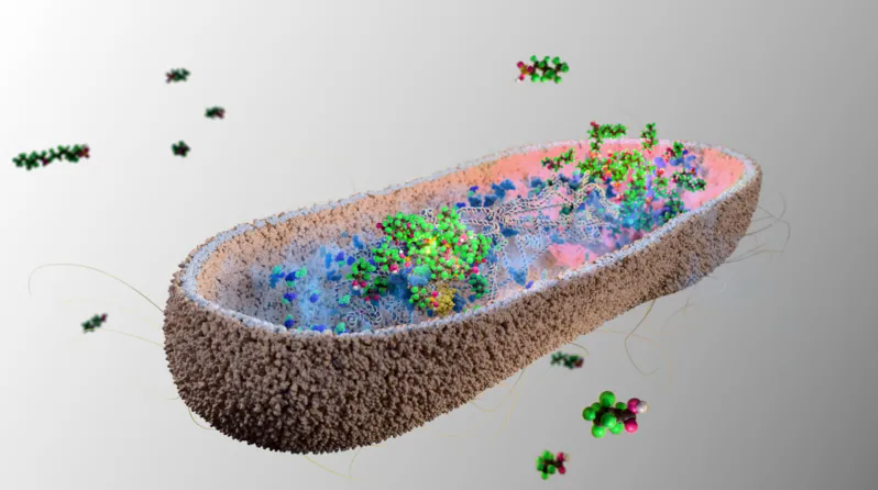Scientists Discover Gut Bacteria That Remove “Forever Chemicals” (PFAS)
Peter Northrop/MRC Toxicology Unit
What Are PFAS and Why Do They Matter
Per‑ and polyfluoroalkyl substances—commonly called PFAS or "forever chemicals"—are used widely in waterproof clothing, non‑stick cookware, food packaging, and cosmetics.
Moreover, these chemicals persist in the environment and in the human body because they resist degradation.
Also, PFAS have been linked to serious health problems, including cancer, reduced fertility, developmental delays in children, and heart and kidney issues.
A Novel Discovery: Gut Bacteria That Absorb PFAS
First, researchers at the University of Cambridge found several species of bacteria naturally present in the human gut that can absorb PFAS molecules from their environment.
Next, those bacteria were introduced into mice to “humanise” their gut microbiome. The mice then excreted a substantial fraction of ingested PFAS via their faeces.
Also, in lab tests, bacterial strains showed impressive uptake—soaking up between 25% and 74% of PFAS within minutes.
Why This Is Groundbreaking
Furthermore, this is the first evidence that our gut microbiome could play an active role in removing toxic PFAS from the body.
In addition, the bacteria cluster PFAS inside their cells, which appears to shield them from toxicity.
Also, the percentage of PFAS absorbed stayed consistent even as exposure levels increased.
From Lab to Supplement: The Road Ahead
Then, the research team formed a startup—Cambiotics—to develop probiotic supplements that boost these PFAS‑absorbing microbes in the human gut. They aim for safe, accessible products potentially available in 2026.
Furthermore, human trials are still needed to verify whether this method works in people as it did in mice.
Limitations & Ongoing Questions
However, this has not yet been tested in humans. So we don’t know whether similar PFAS absorption occurs in the human gut.
Also, not all gut bacteria can perform this feat—only certain high‑accumulating strains seem capable.
Moreover, these tests focused mainly on long-chain PFAS, like PFNA and PFOS—shorter compounds may behave differently.
Broader Benefit: Dietary Fiber Supports PFAS Elimination
In addition, separate research suggests that dietary fiber—especially beta‑glucan found in oats—may help reduce PFAS absorption in the gut by binding them and supporting their excretion.
Also, a cholestyramine drug (commonly prescribed for cholesterol) has shown promise in lowering PFAS blood levels by roughly 60% in small clinical trials—though side effects limit its broad use.
Why This Discovery Matters
First, it points to a non-invasive way to reduce body burdens of PFAS—potentially safer and more accessible than current options like blood exchange or drugs.
Second, given that PFAS are effectively everywhere, a probiotic method represents a practical step toward mitigation in daily life.
Also, given their accumulation over time in vulnerable populations—even fetuses or children—these bacteria might offer a protective strategy.
Health Risks That Make This Urgent
Moreover, PFAS exposure has been linked to impaired kidney function, reduced immunity, endocrine disruption, developmental neurotoxicity, and increased cancer risk.
Additionally, one recent study found that PFAS exposure altered gut microbiome profiles in young adults, contributing to declines in kidney health over several years.
How to Protect Yourself Now
Meanwhile, experts recommend avoiding PFAS exposure by cutting back on non-stick cookware, waterproofed textiles, and certain processed food packaging.
Also, installing effective water filters remains a practical barrier against PFAS ingestion.
Furthermore, focusing on a high-fiber diet may support elimination of PFAS from the digestive tract.
Summary: What Scientists Found
Key Insight Takeaway
Gut bacteria absorb PFAS Up to 74% uptake from gut in lab tests
Mouse microbiome humanised PFAS excreted via faeces after bacterial colonization
Bacterial clumping mechanism Bacteria store PFAS safely inside their cells
Probiotic development underway Cambiotics to launch supplements by 2026
Complementary approaches Fiber-rich diet and water filtration recommended
Final Thoughts
Ultimately, this research marks a major step toward a natural, microbiome-based strategy to remove toxic PFAS chemicals from our bodies.
Yet real confirmation awaits human trials. Until then, avoiding exposure and supporting gut health are prudent choices.
As scientists further explore this avenue, our microbiome may emerge as our greatest ally in detoxing from "forever chemicals."
Stay tuned—for this could be the beginning of a revolutionary path in public health.
